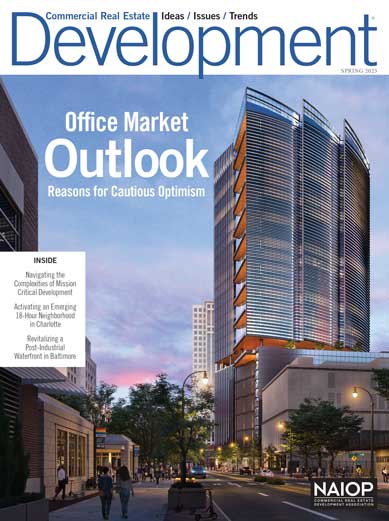Building for Resiliency Ensures Physical-and Financial-Security
It’s not just about constructing properties that can survive disasters; a holistic approach to the built environment also adds value.
A stormwater-management project shows how practical solutions to the problem of runoff can be aesthetically pleasing, too.
It’s not just about constructing properties that can survive disasters; a holistic approach to the built environment also adds value.
HITT Contracting’s new facility aims to be a laboratory of cutting-edge, sustainable building products and technologies.
A new study says tolls and gas taxes are possible funding solutions to pay for much-needed repairs to this critical piece of transportation infrastructure.
Whether it’s replacing worn materials or an intensive intervention, architectural updates can enhance the value of a property.
Both options can be good investment vehicles for commercial real estate.
Developers are partnering with educators and local communities to launch new training and recruitment programs.
Increasing clear heights in industrial properties can make older buildings suitable for modern logistics uses.
Conflicting local and federal laws, along with NIMBYism, could be slowing investment in marijuana-related facilities.
Shared office space appears to be the fastest-growing trend in commercial real estate.
 Summer 2025 Issue
Summer 2025 Issue
Development’s summer 2025 issue explores experiential retail and the brick-and-mortar resurgence. Also featured: a modern warehouse campus in Toronto that honors its manufacturing heritage; a coalition of Oregon real estate organizations working to revitalize downtown Portland; and the creative capital stack strategy behind a mixed-use project in West Baltimore.
 Spring 2025 Issue
Spring 2025 Issue
The spring 2025 issue offers insights about where the office market might be heading over the coming year, explores the complexities of mission critical development, and provides detailed looks at two transformative mixed-use projects: The Bowl at Ballantyne in Charlotte and Baltimore Peninsula in Maryland.
 Winter 2024/2025 Issue
Winter 2024/2025 Issue
Development magazine’s winter issue delves into the evolving uses of artificial intelligence in the commercial real estate industry, from lease management and building operations to portfolio assessment and data analysis.
